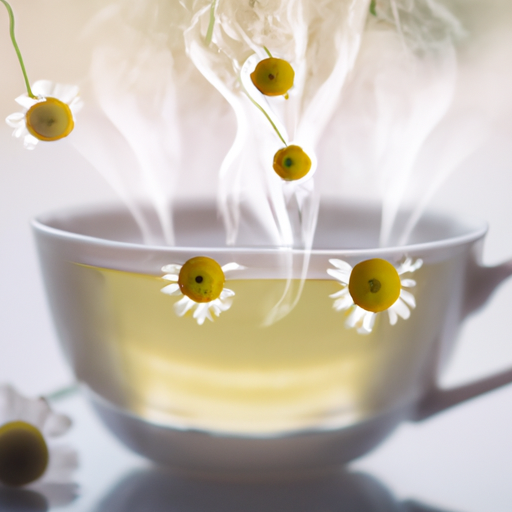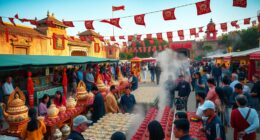Shopping for vintage teacups is akin to going on a treasure hunt, where each discovery is a one-of-a-kind piece of history just waiting to be found.
As a seasoned collector, I have learned that there are five important things to look for when searching for that perfect vintage teacup.
First and foremost, a thorough inspection is crucial to ensure the cup is in excellent condition, with no chips or cracks. While a little wear is acceptable, it adds to the charm and authenticity of the piece.
Matching saucers are a must, as they not only complete the set but also increase its value.
Checking the manufacturer’s stamp is essential for determining the teacup’s worth and authenticity, with renowned brands like Royal Albert and Wedgwood being highly sought after.
Avoiding teacups with repairs is crucial, as they can significantly diminish their value.
Lastly, selecting a teacup that aligns with your personal style is essential, as it adds a touch of individuality to your collection.
So, whether you’re a seasoned collector or just starting out, keep these five important factors in mind when vintage teacup shopping for a truly exceptional find.
Key Takeaways
- Vintage teacups can be found online on platforms like Etsy, but they can be expensive.
- Thrift stores, yard sales, antique shows, and auctions are great places to find affordable vintage teacups in excellent condition.
- When vintage teacup shopping, look for teacups without chips or cracks, but slight wear is acceptable.
- Matching saucers add value to vintage teacups, so make sure the saucer matches the teacup.
What to Check for
When vintage teacup shopping, I always make sure to check for any chips, cracks, or repairs on the teacup to ensure its value and condition. These imperfections can significantly affect the worth and usability of the teacup.
I carefully examine the teacup from all angles, looking for any signs of damage. Additionally, I pay attention to the overall wear and tear of the teacup. Slight wear is acceptable, as it adds character and authenticity to the vintage piece. However, extensive damage or repairs can decrease its value.
To spot authentic vintage teacups, I always check the manufacturer’s stamp on the bottom of the teacup. This stamp not only provides information about the brand but also helps determine the teacup’s authenticity.
By considering these factors when assessing vintage teacup condition, I can ensure that I’m making a valuable and informed purchase.
Finding Affordable Teacups
While on the hunt for vintage teacups, I stumbled upon some hidden treasures at thrift stores and yard sales that were a steal.
These places are great for finding vintage teacups at a bargain price. Thrift stores often have a wide selection of vintage items, including teacups, and they’re usually priced very affordably.
Yard sales are another excellent option, as people often sell their unwanted items at a fraction of their original cost.
When shopping at these places, it’s important to have some tips for bargaining. Don’t be afraid to negotiate the price, especially if you notice any flaws or imperfections. Also, be friendly and polite, as it can go a long way in getting a better deal.
Happy hunting for your perfect vintage teacups!
Determining Value
I found it fascinating to learn about the different factors that contribute to determining the value of vintage teacups. When it comes to determining the value of a vintage teacup, there are several important factors to consider:
-
Manufacturer and Brand: The reputation and popularity of the manufacturer or brand can greatly impact the value of a vintage teacup. Brands like Royal Albert, Paragon, and Aynsley are highly sought after by collectors, which can drive up the value.
-
Rarity and Scarcity: The rarity of a vintage teacup can significantly increase its value. Limited edition or discontinued patterns, as well as teacups from specific time periods, can be highly sought after by collectors.
-
Condition: The condition of a vintage teacup is crucial in determining its value. Teacups in excellent condition, without any chips, cracks, or repairs, are more valuable. Slight wear may be acceptable, but any major damage can significantly decrease the value.
If you’re unsure about the value of your vintage teacup, there are teacup appraisal services available that can provide a professional assessment. These services can help you determine the true worth of your teacup and provide guidance on pricing if you’re looking to sell.
Frequently Asked Questions
How can I determine the age of a vintage teacup?
To determine the age of a vintage teacup, I examine the manufacturer’s stamp, as it often includes a date code or serial number. Additionally, I consider the style, design, and materials used, such as bone china or porcelain, which can indicate the era of production.
Are there any specific markings or symbols that indicate the authenticity of vintage teacups?
Yes, there are specific markings and symbols that indicate the authenticity of vintage teacups. Look for manufacturer’s stamps, such as Royal Albert’s crown symbol, or pattern numbers that match documented designs. These details help identify genuine vintage teacups and distinguish them from fakes.
Can I use vintage teacups in the microwave or dishwasher?
Yes, vintage teacups should generally not be used in the microwave or dishwasher. The delicate materials and hand-painted designs can be damaged by the heat and harsh detergents. It is best to hand wash them carefully.
What are some common patterns to look for in vintage teacups?
When vintage teacup shopping, it’s important to know common vintage teacup patterns to spot valuable pieces. Look for popular patterns like Rose, Blue Willow, and Floral. These patterns can increase the value of the teacup.
How should I store and display my vintage teacup collection to ensure their longevity?
To ensure the longevity of your vintage teacup collection, use storage techniques like wrapping each teacup in acid-free tissue paper and storing them in a cabinet away from sunlight. For creative display ideas, consider using a wall-mounted teacup rack or a vintage china cabinet with glass doors.










